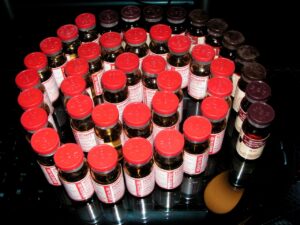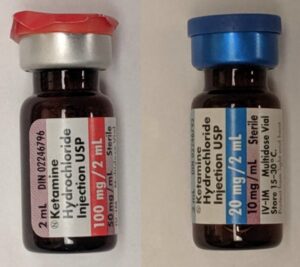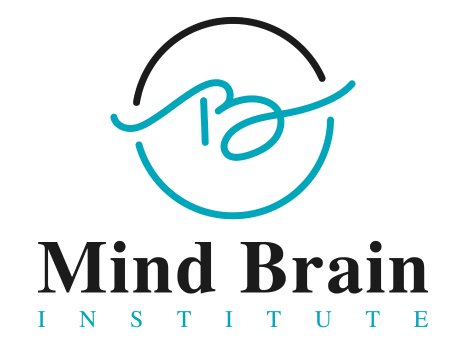
-
Posted By Dr. Anuranjan Bist
-
-
Comments 0
Table of Contents
Ketamine-assisted therapy has emerged as a new method of treating patients suffering from intense depression, PTSD, anxiety, and other disorders. As opposed to the usual antidepressants that could take weeks to manifest, ketamine has a strong effect and works very quickly. This is ideal for those patients who failed other forms of treatment.

But what exactly is ketamine-assisted therapy? How did it evolve from an anesthetic to a tool in mental health care? And what does the FDA say about it? In this article, we’ll explore how ketamine-assisted therapy started, how it works in the brain, and what the current rules and approvals say about using it.
Ketamine-Assisted Therapy: The Origin
1962 was the year when Ketamine was first manufactured. It was used as an alternative to phencyclidine (PCP) which is a compound used as an anesthetic in human and veterinary medicine. As a medicine, Ketamine received approval from the FDA in 1970, which further got popularized because of its ability to provide instant sedation without causing any interference in breathing. However, later the researchers noticed its effects on perception and mood.
Short clinical trials in the early 2000s then started to test low doses of ketamine in treatment-resistant depression patients. And the results were staggering in a few hours, patients had significant mood improvements.
This finding paved the way for ketamine-assisted therapy, a paradigm that pairs controlled amounts of ketamine with experienced psychotherapy. Next came ketamine clinics that opened and provided facilitated sessions using the drug as part of a holistic treatment plan. Now, this holistic treatment is not just seen as symptom relief but as a transformative experience that is capable of releasing profound psychological healing.
How Ketamine-Assisted Therapy Works
Biological Effects of Ketamine
The therapeutic action of ketamine is through its immediate and certain effect on the brain, reducing agony in hours, whereas the typical antidepressants would act in weeks. It is beneficial in patients with acute depression or suicidal crises.

Ketamine accomplishes this by acting on glutamate, the brain’s key chemical. It blocks NMDA receptors and increases the amount of glutamate (Lazrevic et al., 2021). This then stimulates AMPA receptors and allows the brain to make new connections. The process of synaptic plasticity has been found to allow individuals to reverse their negative thinking patterns. This remodeling disrupts intractable depressive and PTSD thinking, offering a “mental reset”.
Also, ketamine shuts down activity in an area of the brain is the default mode network (DMN). That is associated with bad rumination and self-blame. Relaxation resulting from such a decrease can potentially led to emotional freedom and clarity from intrusive thoughts.
We also know that research has proven that ketamine diminishes brain inflammation, raises BDNF (protein necessary to keep brains healthy), and turns around stress-induced neuron damage. All these enhancements create an ideal environment for profound emotional recovery, particularly when combined with psychotherapy.
The Ketamine-Assisted Therapy Process
Ketamine-assisted therapy is not necessarily about getting high, it’s a highly structured procedure that synergizes the pharmacological activity of ketamine with the psychological support of a licensed therapist. This model synergistic approach guarantees that not only is the patient’s experience deep but also it is productive.
The process usually consists of three main stages:
- Preparation
The preparation starts with a patient undergoing an all-around psychological and medical assessment to check his/her eligibility. This assessment includes reviewing current physical condition, medications, and mental health history and subsequently determining the treatment goals. Once found eligible, the therapist explains what to expect, answers questions from the patient. This helps the patient to prepare for the session mentally by reducing anxiety.
- The Ketamine Session
Ketamine is delivered through:
- IV infusions – prevalent in research
- IM injections – quick and easy
- Nasal spray (Spravato) – FDA-approved for the treatment of depression
- Sublingual lozenges – utilized in guided at-home regimens

These Ketamine-assisted therapy sessions are carried out in a serene, controlled setting with minimal distractions and go on for 45-90 minutes. During this, the patient may induce a dissociative, dreamlike, and meditative feeling, and to ensure safety and aid a trained doctor or therapist remains present. Depending on the method, they will provide guidance or simply hold space while the experience takes place.
- Integration Therapy
After acute effects subside, the patients have integration sessions—talk therapy with the goal of processing and integrating insights from the experience to bring back into the world.
This is where the results of ketamine-assisted therapy start seeing. Patients process emotional breakthroughs and work with the therapist to implement them in everyday life, for example, utilizing a moment of release during the session to aid in self-forgiveness.
Integration can involve:
- Journaling or artistic expression
- Mindfulness exercises
- Cognitive-behavioral strategies
- Changes in lifestyle or goal-setting
With time, ketamine-assisted therapy facilitates profound emotional insights, behavior modification, and sustained relief, rendering it an effective weapon in contemporary mental health treatment.
FDA Approvals and Legal Landscape
Despite the approval as a drug received for ketamine in 1962, it has not been approved by the FDA for use in mental health treatment. Yet, its use is considered legal if a licensed practitioner prescribes it off-label. However, in the year 2019, the FDA approved Spravato, which has esketamine (a more potent isomer of Ketamine) for the treatment of suicidal thoughts and treatment-resistant depression. It is compulsorily administered in a certified clinic as there could be side effects.
The majority of ketamine-assisted therapy practitioners employ generic ketamine off-label, adhering to clinical guidance and expert recommendations. As ketamine is a Schedule III controlled substance, while illegal otherwise, it is legal if prescribed by well-trained professionals.
For Whom is Ketamine-Assisted Therapy Beneficial?
Ketamine-assisted therapy is used only on treatment-resistant depression as a whole. That is, it is done on patients who have already failed two other antidepressants. More evidence suggests that it could be useful in:
- Post-Traumatic Stress Disorder
- Severe anxiety disorders
- Obsessive-compulsive Disorder (OCD)
- Addiction and substance abuse
- Chronic pain syndromes like fibromyalgia
They are subjected to extensive psychiatric and medical evaluation before pursuing ketamine-assisted therapy. It should not be used with a history of psychosis or with some cardiovascular diseases. Its safe application, medical monitoring, and integration therapy are required to attain maximum benefits with minimum adverse effects.
Future Outlook and Conclusion
Ketamine-assisted therapy is part of a bigger movement towards psychedelic-aided psychological therapies, such as the drugs psilocybin and MDMA that are currently undergoing clinical trials. With science making further strides and stigma decreasing, treatments will become more specific, insurers will pay for more, and broader FDA approvals may soon follow.
Ketamine-assisted therapy is the action-based and research-driven treatment for treatment-resistant mentally ill patients. It combines the brain-healing processes of ketamine with talk therapy so awareness and healing can be realized. Not a blanket approach, it is an enormous potential solution when given responsibly through professional treatment. If you are looking into state-of-the-art treatment, ketamine-assisted therapy could be an option to explore with medical supervision.
Recent Posts
- What is Ketamine-Assisted Therapy: A Deep Dive
- Neurofeedback for Anxiety Disorders: Non-Medicine Holistic Option
- What Is Heart Rate Variability (HRV) and Why Does It Matter for Anxiety?
- Ketamine Therapy for Anxiety Disorder
- TMS Therapy in India for Anxiety Disorders: A New Era in Non-Medication Mental Health Treatment

